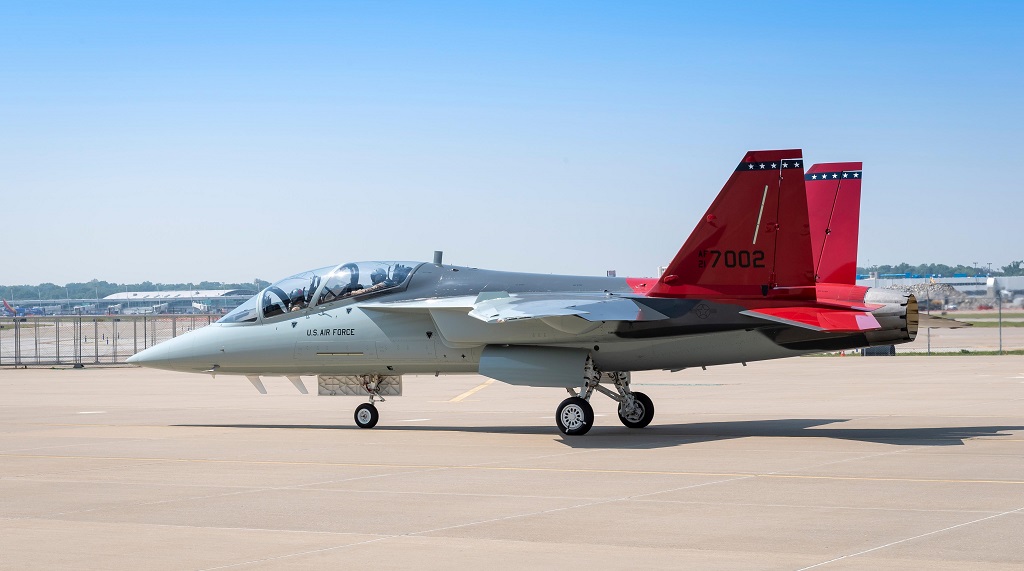After multiple delays, military pilots can finally fly on the new trainer.
With a short post on social media, Boeing announced that the T-7A Red Hawk finally received its Military Flight Release from the U.S. Air Force, paving the way for the first flight of the production variant and flight testing with military pilots on board. The MFR announcement follows the first taxi test of the production variant, which took place on June 9, 2023.
The Military Flight Release was delayed because of issues discovered during testing of the ejection seat, which in turn delayed flight testing by Air Force pilots. These, together with issues discovered in early flight testing, now solved, caused the postponement of the Milestone C decision and of the beginning of the low-rate initial production.
Cleared for takeoff!
T-7A #RedHawk received its Military Flight Release (MFR) from the @USAirForce, signaling clearance for first flight. The MFR affirms that all air worthiness processes have been met to conduct flight and test operations of the advanced trainer. pic.twitter.com/g8TkivOTTN
— Boeing Defense (@BoeingDefense) June 12, 2023
Last month, the U.S. Air Force’s Service Acquisition Executive Andrew Hunter, said the new advanced trainer jet won’t achieve the Initial Operational Capability until early 2027, a year later than the latest projection after the milestone was first moved from the original 2024 target. Developmental flight testing of the T-7A Red Hawk is expected to begin this summer, with the Milestone C now planned for early 2025.
The issues were specifically discovered during testing of the egress system with mannequins of the smallest class of pilot’s body types expected to fly the aircraft. The tests showed high risk for concussions, unsafe acceleration when the parachute opens and the possibility that a pilot’s helmet visor could fly off at high speeds, according to Air Force spokespersons.
The Government Accountability Office already flagged the T-7’s ejection seat as a “top” program risk and one of two “primary” risks to the trainer’s development. That is because the Air Force mandated in 2020 that companies must design future aircraft to fit a wider range of recruitable Americans, but creating an ejection seat that could work for all these different body types is proving to be tricky.
Hunter said that in February the development team was able to achieve important results during sled tests, dealing with some of the issues of the ejection seat. Boeing later showed some of the testing which went down at the U.S. Air Force’s Holloman High Speed Test Track, where the new Collins Aces 5 ejection seat is being tested to minimize the risks of high speed ejection for aircrew.
✋ High-five for 500!
The two T-7A #RedHawk production representative jets (PRJ) have reached 500 flights. The advanced trainer will prepare future @USAirForce fighter and bomber pilots for their missions. pic.twitter.com/rQDZAGbdc9
— Boeing Defense (@BoeingDefense) June 12, 2023
So far Boeing has built five T-7s, including the first two prototypes T1 and T2. The latter are still flying, although they are not fully representative of the eventual operational aircraft. T1 was also seen in December 2022 during testing of the spin recovery chute ahead of the next round of flight testing. Few days ago, Boeing announced that the two production representative jets, as they call T1 and T2, reached the 500 flights milestone.
Boeing rolled out the production variant of the Red Hawk in April 2022, bearing the tail flash of the 99th Flying Training Squadron at Joint Base San Antonio-Randolph, Texas, which will be the first unit to operate the new airplane. Following the taxi tests last week, the aircraft is now getting readied for the first flight.













